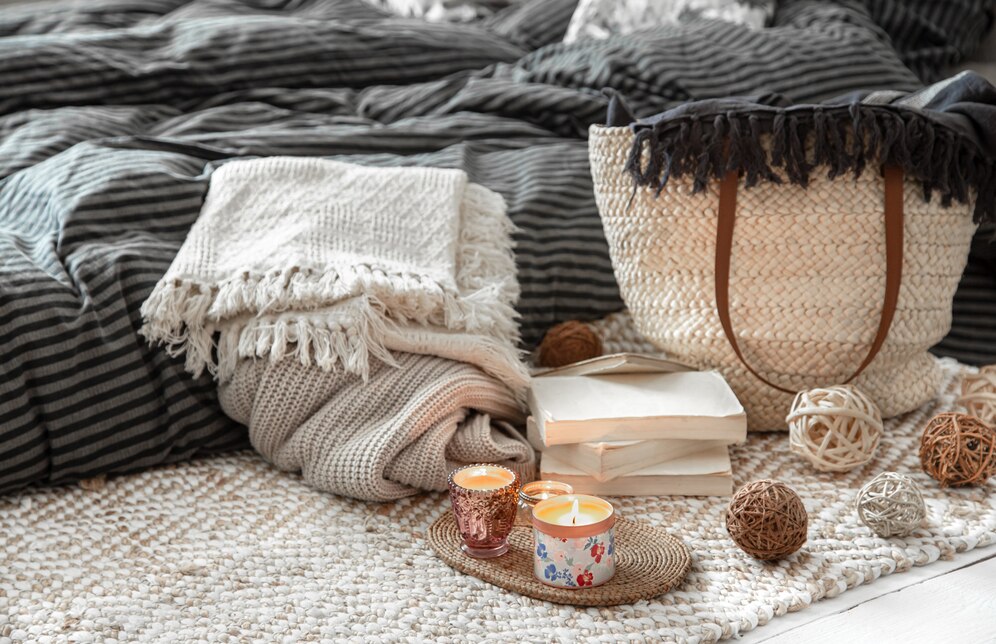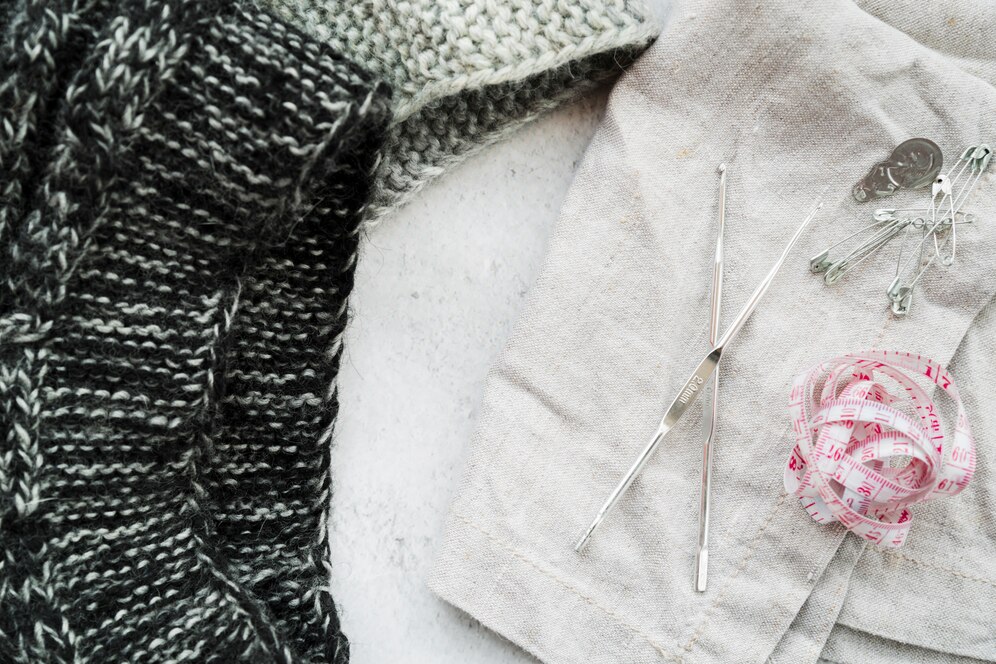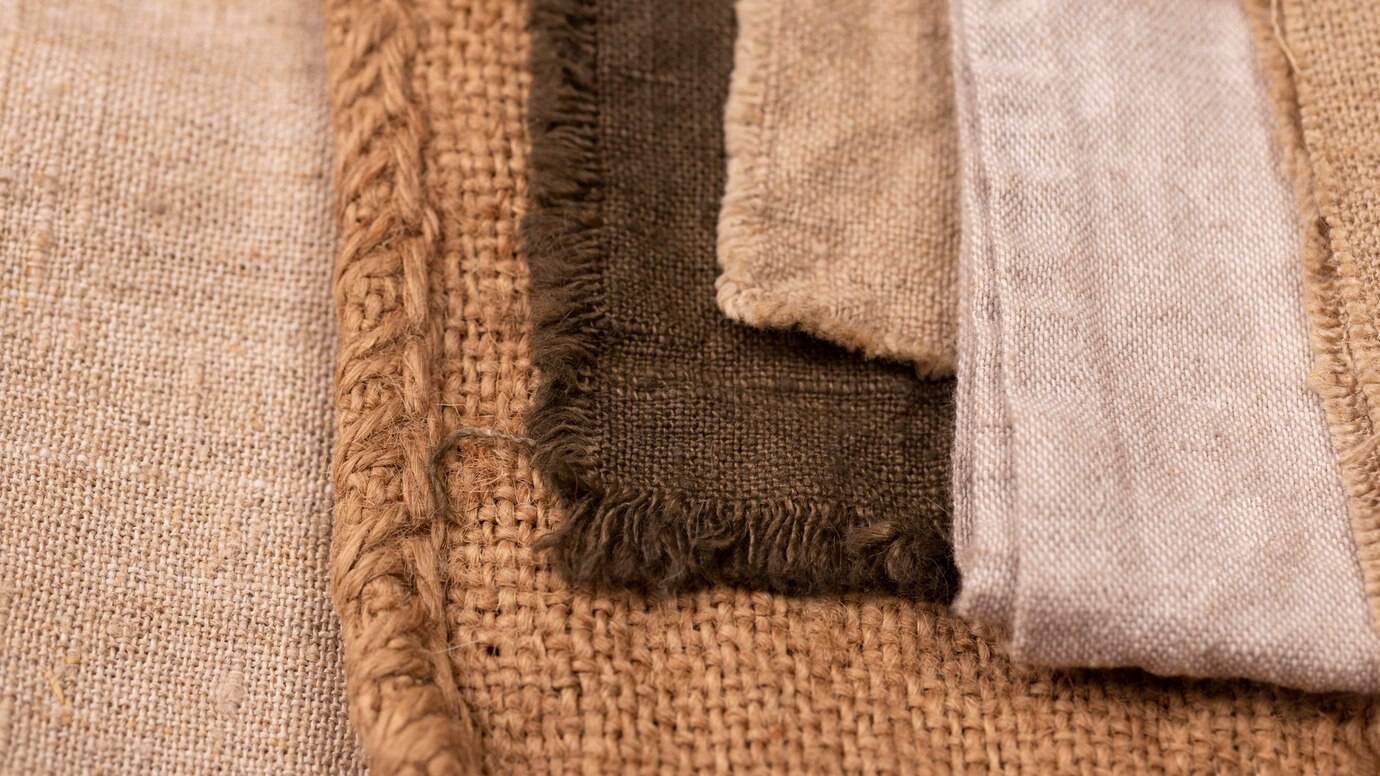
Recycled Fabrics in Modern Nordic Homes
Imagine curling up under a beautiful throw blanket on a chilly evening — soft to the touch, elegantly understated, and made entirely from repurposed materials. It’s the kind of thoughtful comfort that defines Scandinavian design, where aesthetics meet purpose. But beyond the hygge charm, there’s a deeper narrative: recycled textiles are quietly transforming modern Nordic homes into havens of sustainability.
In a world more conscious of environmental impact, the shift towards eco-friendly Scandinavian interiors is about more than minimalism — it’s about mindful material choices. From upholstery to curtains, cushions to rugs, Nordic fabric trends are embracing recycled fibres as both a design choice and an ethical one.
In this article, you’ll discover how recycled fabrics are used in Scandinavian interiors, the best materials to look for, and how to style them with warmth and purpose. With practical ideas and real-life examples, we’ll show you how sustainability doesn’t mean sacrificing beauty — it means adding meaning.
Why Recycled Textiles Matter in Nordic Interiors

Rooted in Values
Scandinavian design isn’t just about clean lines and muted tones. At its core, it celebrates:
- Functionality – Every object serves a purpose.
- Simplicity – Clutter is out, clarity is in.
- Connection to Nature – Through materials, colours, and form.
- Longevity – Quality and durability matter more than trends.
Using recycled textiles perfectly aligns with these principles. They reduce waste, minimise carbon footprints, and give old materials new life — all while maintaining the natural, tactile appeal that defines Nordic aesthetics.
Climate and Culture
Scandinavians spend long months indoors, which makes the feel of home essential. Textiles play a major role in softening spaces — not just for comfort, but to reflect seasonal shifts, personality, and tradition. Opting for eco-friendly Scandinavian fabrics turns these everyday items into stories of resilience and intention.
What Counts as Recycled Fabric?
When we talk about recycled fabrics, we’re referring to materials made from post-consumer or post-industrial textile waste. This includes:
- Recycled cotton – Often made from old clothes or production scraps.
- Recycled wool – Sourced from unwanted garments or mill offcuts.
- Recycled polyester (rPET) – Derived from plastic bottles and packaging waste.
- Upcycled fabric blends – Creative mixes of reused fibres, sometimes paired with natural materials like hemp or linen.
Look for certification labels such as:
- Global Recycled Standard (GRS)
- Recycled Claim Standard (RCS)
- OEKO-TEX® for safety assurance
These guarantees help you trust that the Nordic fabric in your home is genuinely sustainable — not just a marketing buzzword.
How Recycled Textiles Are Used in Scandinavian Homes
1. Throws and Blankets: The Softest Layer
Few things feel more Scandinavian than a textured wool throw draped across a bench or the end of a bed. Today, many of the most stylish brands are producing these staples using recycled wool or blended fibres.
- Design Tip: Choose herringbone or check patterns in muted tones (greys, ochres, dusky blues).
- Where to Use: Over sofas, armchairs, or even outside on a garden bench.
Real-life touch: In her Oslo home, Ingrid layers two throws — one made from old wool sweaters, the other from recycled cotton. “They’re not just soft,” she says, “they carry stories. I love knowing they’ve lived other lives.”
2. Cushion Covers: Personality with Purpose
Cushions are the easiest way to refresh a space seasonally. By choosing covers made with recycled textiles, you inject character while staying planet-conscious.
- Look for linen-cotton blends with handwoven textures.
- Try subtle geometric stitching or tone-on-tone embroidery for depth.
- Mix neutral palettes with one or two earthy or clay-based colours.
Bonus: Zip-off covers make it easy to wash and swap, extending their use and appeal.
3. Upholstery and Furniture
Yes, even your armchairs and sofas can be dressed in eco-friendly Scandinavian textiles.
- Many Scandinavian furniture brands now offer recycled fabric upholstery options.
- rPET fabrics are increasingly used in modern upholstery thanks to durability and easy cleaning.
- Recycled wool blends are great for benches or pouffes — warm in winter, breathable in summer.
Design Tip: Pair structured furniture with soft textures. A recycled wool seat on a sleek oak chair? Perfection.
4. Curtains and Drapes
Curtains often use a lot of fabric, making them a big opportunity for sustainable swaps.
- Choose recycled cotton or linen panels that allow natural light to filter in.
- Go for natural tones — off-white, soft grey, muted sand — to keep things airy.
- Avoid heavy synthetics or lined curtains unless they’re recycled and insulated for energy efficiency.
Style Insight: In Malmö, designer Elias repurposed hotel bed linens as living room curtains. “They’re crisp and bright, and I love their second life.”
5. Rugs and Runners
Yes, even underfoot can be sustainable.
- Recycled cotton rag rugs are a Nordic classic — colourful, durable, and often handmade.
- Recycled PET rugs (made from plastic bottles) are now popular for high-traffic areas like hallways and kitchens.
- Choose low-pile textures in earthy tones, and layer if needed for comfort and warmth.
Note: Always check for slip-resistant backings or add a rug pad for safety.
Where to Find Eco-Friendly Scandinavian Textiles
Nordic Brands Leading the Way
- Linie Design (Denmark): Offers handmade rugs using GRS-certified materials.
- Lapuan Kankurit (Finland): A weaving mill with ethical recycled blends and artisan production.
- Skandinavisk Hemslöjd: Known for hand-loomed cotton and wool pieces from recycled fibres.
- Ferm Living & Muuto: Contemporary furniture and textiles with sustainable options.
UK & EU-Based Retailers
- Made.com: Often stocks Scandi-inspired home textiles using recycled fibres.
- LinenMe: Offers upcycled linen textiles made in Lithuania.
- Etsy: Search terms like “recycled Nordic cushion” or “Scandinavian eco throw” to support small makers.
Making Recycled Textiles Work in Your Home
Choose Longevity Over Novelty
Scandi interiors aren’t about chasing trends — they’re about timeless functionality. When you choose recycled textiles, opt for:
- Classic patterns like stripes, checks, or solids.
- Neutral colours that complement existing decor.
- Quality over quantity – one good throw is better than five poor-quality ones.
Embrace Imperfections
Recycled fabrics often have minor inconsistencies in weave or colour. That’s part of their charm.
- Display them proudly — as signs of the resourceful, low-impact design.
- Mix textures to create interest — rough linen against soft wool, or structured cotton beside flowing drapes.
Care Tips
To extend the life of your recycled textiles:
- Wash cold and air dry where possible.
- Spot clean upholstery instead of full washes.
- Rotate cushions and throws to even out wear.
Real-Life Story: Elin’s Recycled Textile Journey
Elin, a young mother in Gothenburg, made a personal vow to reduce her household waste in 2023. She began with her home’s soft furnishings.
“I found a throw made from recycled jeans,” she shares. “It was beautiful — all slate blue and soft to the touch. Then came the upcycled curtain panels, and now every new cushion is from reclaimed fabric.”
What started as a sustainability choice became a design love story. Her guests often compliment the uniqueness of her home — proof that recycled doesn’t mean reduced style.
Beauty That Doesn’t Cost the Earth

Recycled textiles aren’t a compromise. They’re a conscious elevation of your space — tactile, thoughtful, and aligned with the very principles that make Scandinavian design so enduring.
Incorporating eco-friendly Scandinavian fabrics into your home means choosing with intention. From the throw over your sofa to the rug underfoot, each piece holds meaning. A past life. A smaller footprint. A softer presence.
Whether you’re styling a flat in Edinburgh or a cabin in Norway, there’s space for Nordic fabric that tells a sustainable story. Start with one item — a cushion, a curtain, a throw — and feel the difference, both physically and emotionally.


